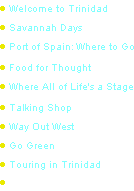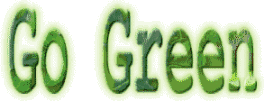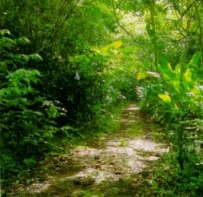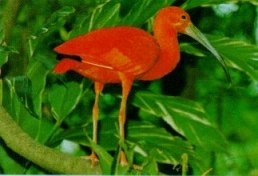


 rinidad has some of the most diverse ecosystems in the Caribbean. The island was once part of the South
American mainland: a happy accident of geography whose legacy is a tremendous diversity of fauna and
flora, richer than those of any other Caribbean territory of similar size.
rinidad has some of the most diverse ecosystems in the Caribbean. The island was once part of the South
American mainland: a happy accident of geography whose legacy is a tremendous diversity of fauna and
flora, richer than those of any other Caribbean territory of similar size.

|
| Photo: Hiker's Trail: Mark Lyndersay |
The background to all this wildlife is a rich tapestry of colour: yellow poui, orange flamboyant and red immortelle trees; exotic ginger lilies; an array of orchids; bromeliads of every hue. The total number of flowering plants exceeds 2,000 species. Insects are superabundant; there are over 600 tropical butterflies including the spectacular Emperor and the lesser known Page, Postman and “89”. Equally fascinating are the Hercules or Harlequin beetles, and the walking-stick”insect.
Trinidad is home to plenty of fish and amphibian species, the latter being particularly abundant. The Golden Tree Frog is the only species endemic to Trinidad; it lives and breeds in the water trapped in bromeliads at high elevations. Caiman (a species of alligator) are common in swampy areas.
The Caroni Swamp is the preferred haunt of Trinidad’s national bird, the Scarlet Ibis. There are boat tours daily into the Swamp to witness their spectacular roosting. Besides the hundreds of brilliant red Ibis, there’s a good chance of seeing the Common Potoo (a nocturnal bird), Cook’s tree boa, the semi-amphibious “four-eye fish”, and even the Silky Anteater. Another memorable roosting site is at Cocos Bay on the east coast, where hundreds of Red-bellied Macaws gather at dusk in a cluster of Royal Palm trees. There are Red Howlers or Weeping Capuchin monkeys in this area; and with luck the gentle manatee may be seen swimming below the bridges.
An experience not to be missed is the nesting and hatching of the world’s largest turtle, the endangered Leatherback, on the north and east coasts of Trinidad from March to August. The female turtle lays

|
| Photo: Scarlet Ibis: Russell Barrow |
Nature lovers have several special havens in Trinidad. The Asa Wright Nature Centre near Arima, the Pointe-à-Pierre Wild Fowl Trust near San Fernando, and Pax Guest House & Nature Lodge at Mt St Benedict are all equipped with bird feeders, maps, knowledgeable guides and a network of well-constructed nature trails.
Someone once wrote: “Take nothing but pictures, kill nothing but time and leave nothing but footprints”. It’s a good motto. Happy exploring.
Gerard Ramsawak
e-mail comments and questions to
webmaster@carib-link.net
This Page Is Maintained By Carib-Link Web Designers
(c) 1998 Media and Editorial Projects. All rights reserved.